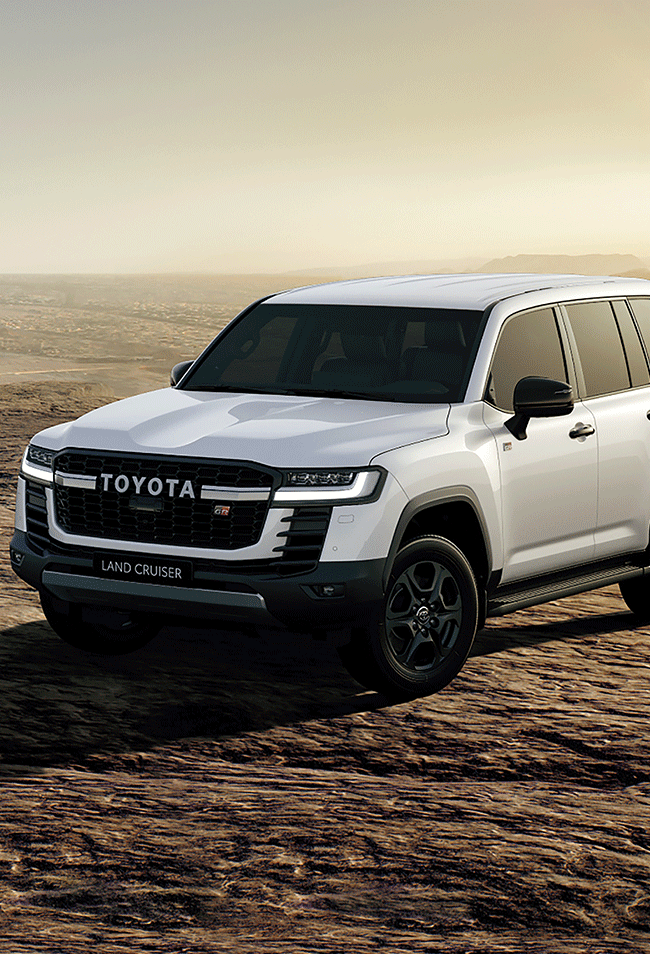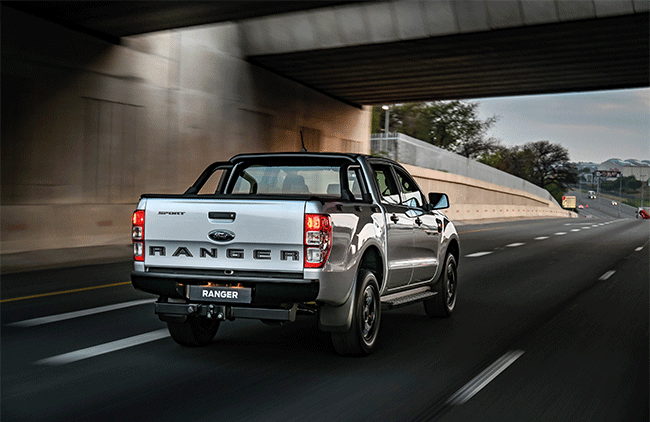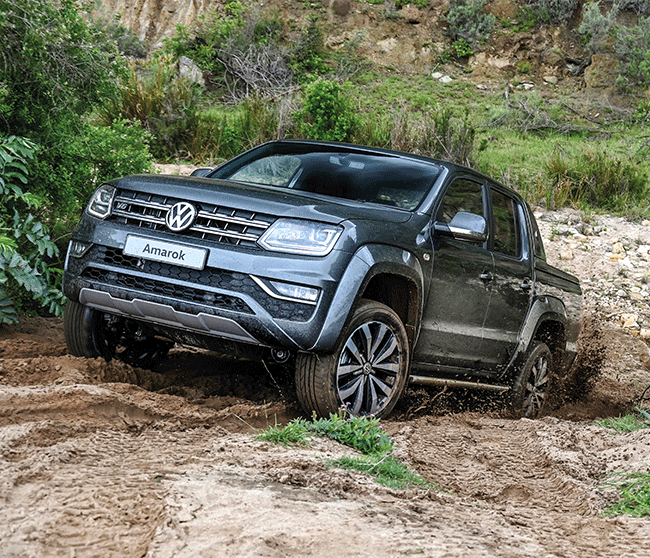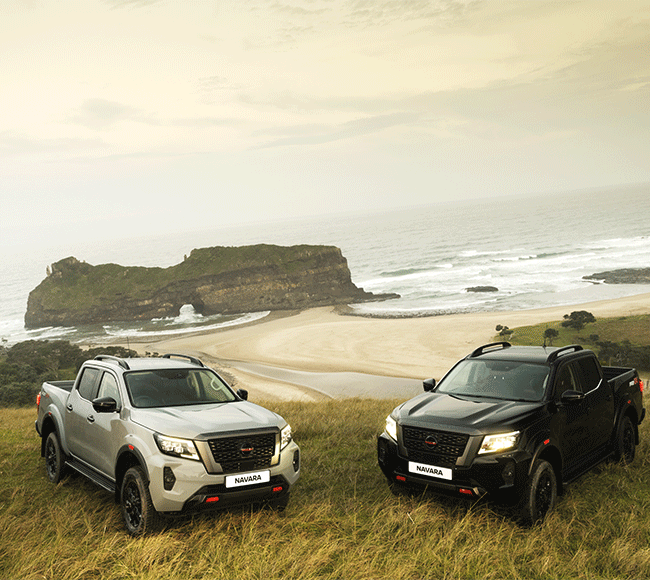Marcus de Wet is not a man who plays by other people’s rules. Dressed in a House of Machines T-shirt and vintage Wranglers, all the messaging suggests an ad agency pedigree. But De Wet is a CFO, an international-currency specialist, adept at pre-emptive manoeuvres good for both company and self. He’s standing next to his kitted-out Toyota Land Cruiser 79 double cab.
‘I started out on bikes, off-roaders first, then dual-purpose and, finally, my BMW [R]1250 GS Adventure, which I still have. As a group of friends, we pay a company to transport our bikes to some far-flung place, we fly in privately and then head out on tour. Kalahari mostly, the Northern Cape, Namibia – basically where there are no people and plenty of empty dirt roads. We camp, stay in farm-stays, go back to simple. Great trips, getting away from all the nonsense at the office. And family, if I’m completely honest. You love them, don’t you? But demands, demands, demands. Quiet time, just you and a few friends.’
De Wet transitioned into 4x4ing after his divorce. ‘I met someone who enjoyed the outdoors as much as I did, but motorcycling wasn’t an option. We wanted to spend our downtime together, so we needed to make a plan. With this, we can spend what little leisure time we have, away, together,’ he says, with a nod to the impressive rig.
De Wet’s story is an increasingly common one. Corporate stress, social disintegration, COVID – there has been an exponential spike in tailored escape strategies over the past few years, suggests specialist overland expert and guide Gert Truter. Executive retreats, remote second homes in the Karoo; the aim is to release the pressure valve. There’s also seasonal migration into the hinterland. Many of the new adventurers are novices; so for those with the wherewithal, the choicest equipment comes standard, as much to ease the transition to the bush as to impress the boardroom corps.
It’s a market that’s exploded and a rising number of bespoke accessory companies are taking advantage. Truter believes the sector will only get bigger.
‘Post-COVID I’m seeing huge interest from corporates about curated trips into the bush, team-building after the years at home, but also a lot of guys who are bringing their own rigs. They want the best, and there’s a lucrative growth industry there.’
Grant Spolander, former editor of SA4x4 and owner of 4wdrevolution.com, agrees. ‘It’s big business. An example is Alu-Cab. They started off as canopy builders (with the first aluminium canopy) but have since morphed into a giant, global operation that produces high-end rooftop tents and four-sleeper campers that drop in the back of a bakkie.’
Alu-Cab is an international company represented in SA, but local manufacturers have been quick to climb on the 4×4 accessory band wagon. ‘There are a few stand-outs,’ says Spolander. ‘In my opinion, National Luna makes the best camping fridge in the world. It’s a South African brand and everything else is essentially a copy of their system. They also make the best dual-battery systems and battery boxes for you to power a 12V fridge. Their battery systems are also compatible with modern variable-voltage alternators, which is obviously a big thing in the luxury market.’
There’s a lot to spend good money on. Drawer systems, rooftop tents, awnings and tough roof racks are the most requested items. Drawers allow overlanders to pack fridges on top of food and gear, so freeing up valuable space. Big Country, another South African manufacturer, is class-leading in fridges and drawers, now making global waves.
There is a clear distinction in the market between what goes onto a vehicle and what is towed behind it – the vogue is very much for the ‘skilpad approach’; everything on the bakkie rather than behind it, according to Truter. ‘Like everything, fashion plays a big role. Trailers and off-road caravans are not as popular as they once were. Mostly this is because of the big improvement in drawer systems, roof racks and rooftop tents, which all make a lot of sense in the remote bush. But it’s also about style – a fully kitted-out bakkie is just way cooler than a sleepwa, even an offroad one, which to many of the newcomers says “family on board”.
‘A lot of the trailer and caravan guys have gone to the wall recently. The ones that survive, such as Conqueror and Metalian, have excellent products and offer next-level customer service.’
The new adventurers have other considerations. Chief among them is what vehicle to choose. The good news is that 2022 is ostensibly the year of the bakkie, every major manufacturer launching updated versions of their bestsellers; fuel notwithstanding, there’s never been a better time to buy a double or single cab. De Wet’s Toyota Land Cruiser 79 is the hardcore choice – an expensive, tough-as-nails workhorse that gives little away to creature comforts, digital cockpits or cornering ability. He’s okay with that. ‘The V8 diesel is what drew me to the Cruiser; it’s the only one on the market. Yes, it’s expensive, but not that much more compared to some of the high-end fashion bakkies out there now. There is a reason the safari guys choose them. It’s indestructible, essential for the places we go.’
The 4×4 adventuring market has moved from a niche speciality sector to a more mainstream pursuit. The ever-rising fuel price will have an impact, but less than some might imagine, says Truter. ‘Most overlanders, even weekenders, have two or more cars, and fuel is not a major consideration for them. It’s a special-occasion car, the means to do a disappearing act, and they are happy to pay for the privilege.’
TOYOTA
Thanks to its success in the Dakar Rally, Toyota Gazoo Racing has become something of a household name and, with Hilux now celebrating 50 years of service in SA, it’s the ideal time to launch the GR Sport derivative. It’s largely a cosmetic exercise – blacked-out treatment for the alloy wheels, door handles, side-mirror caps, side steps and grille – but there’s useful development elsewhere. A new, larger eight-inch touchscreen arrangement gains physical dials for volume control and tuning, and on the ground, 17-inch wheels wrapped in 265/65 tyres for better off-road suppleness. Stiffer suspension and monotube shock absorbers noticeably improve off-road manners and agility but, crucially, there’s no change to the 2.8-litre turbodiesel engine (with an unchanged 130 kW and 450 Nm sent to all corners via a 6-speed automatic transmission with a low-range transaxle).
ISUZU
The much-loved D-Max – once the hard-wearing KB – has finally been launched in SA and it’s a strong contender for luxury adventurer honours. Much is new. The flagship all singing and dancing 3.0 turbodiesel V-Cross includes leather seats with eight-way power adjustment, Isuzu’s full suite of advanced active driving safety features, eight airbags, and is differentiated from the rest of the range with a roller shutter, gun metallic finishes for the grille, fender flares, door handles, mirror caps, roof rails and the distinctive hooped sports bar. The D-Max suspension has been specifically tweaked for SA, which means an absorbing, smooth ride, helped in no small part by the excellent seats. The 140 kW, 450 Nm version of Isuzu’s 3.0-litre turbodiesel is a proven unit, here mated to a super-smooth 6-speed automatic transmission. The whole experience is entirely upmarket, a far cry from the agricultural previous model. Tough still, but quieter, more dynamic and elegant to boot. An excellent job.
FORD
The next-generation Ford Ranger, due in November 2022, is an amalgam of all-new developments in design, engineering, technology and all-road ability. The most obvious change is to the exterior design, which lifts a number of bold, angular cues from the Ranger’s stateside cousin – the F150. While the latest iteration has grown a few millimetres in every direction, this new styling approach actually makes it look leaner and more purposeful than its rounded forebear. The new car bristles with useful touches such as a plastic load-bed liner that incorporates grooves and fittings for load dividers, as well as a neat box step cut into the rear bumper that makes accessing the load bed a cinch. It’s underpinned by Ford’s third-generation modular T6 platform. In addition to increased wheelbase and track, it sees the front wheels moved 50 mm forward to improve approach angle and outboard to allow for greater axle articulation. Inside, the SYNC 4A infotainment system features a 12-inch touchscreen, resulting in a far cleaner design.
There was nothing wrong with the previous Ranger’s space and comfort, and happily, much of the interior is as it was, at least in terms of dimensions and materials. Tough, handsome, useful. The familiar 2.0-litre, four-cylinder biturbo-diesel unit, as well as the 10-speed auto transmission have been kept, no bad thing, smoothness, refinement and fuel efficiency all well documented. There will also be a 3-litre V6 turbodiesel option at launch, likely to be hugely popular.
VOLKSWAGEN
The 2023 Amarok will, as has been widely reported, be based on the next Ford Ranger, outlined above and, like the Ford, will also be built in SA. Differences then will be mostly cosmetic; designer Albert Kirzinger suggests it will be less angular, higher and longer. It’ll have shorter front and rear overhangs, which should make it more competent at tackling steep approach and departure angles when adventuring on technical terrain. Importantly for the overlander market looking to fill the loadbay with kit, its payload has been increased to 1 200 kg, and towing capacity will be 3 500 kg. Rear-wheel or four-wheel drive setups will be available, all-terrain tyres as standard on 21-inch rims. The Panamericana and Aventura derivatives are the flagships, boasting digital cockpits and, crucially, a V6 diesel power plant. It remains to be seen if VW fans, loyal to a tee, will forgive Wolfsburg for the Ford cohabitation and choose Amarok over Ranger.
NISSAN
Local production of the latest Navara began in late 2021 and initial sales have been strong. Thank the über-masculine looks for that, as much as the new 2.5-litre 4-cylinder turbodiesel motor, revised suspension and beefed-up safety specification. In flagship Pro-4X guise it is a real looker, the trademark putty blue offset against splashes of red and black. Certainly it has the measure of the Ford Ranger in the looks department, until now the title holder. Under the skin Nissan’s emphasis is on longevity as much as comfort. Mechanical componentry has been toughened up, as has the undercarriage and rubber, meaning the cross-country tours it will undertake should be a doddle. On the road it is not as sophisticated as Ford’s Ranger or Toyota’s Hilux, lacking the noise deadening of those two, but it’s dynamic enough and decent in the corners.













